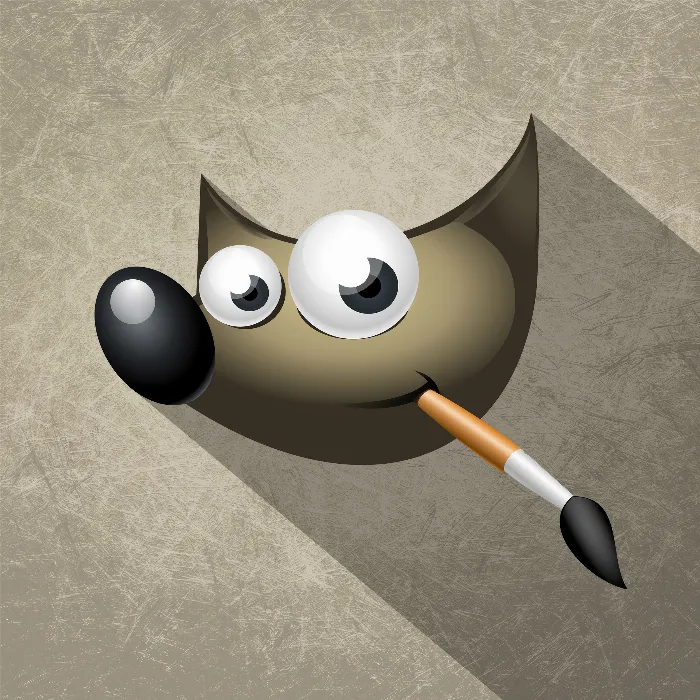The Scale-tool in GIMP is a powerful tool that allows you to edit layers, selections, or paths. It enables you to precisely enlarge or reduce objects, which is often needed in digital image editing. This guide explains the most important steps for the effective use of the Scale tool and provides you with tips to achieve the best results.
Key Takeaways
- The Scale tool only changes the size of objects, not the dimensions of the entire document.
- The "Interpolation" and "Maintain aspect ratio" options are crucial for the quality of the scaling.
- Be sure to try different interpolation methods to get the best results.
Step-by-Step Guide
Selecting the Scale Tool
To use the Scale tool, you first need to select the corresponding icon in the toolbox. You can also use the Shift + T shortcut to quickly activate the tool.
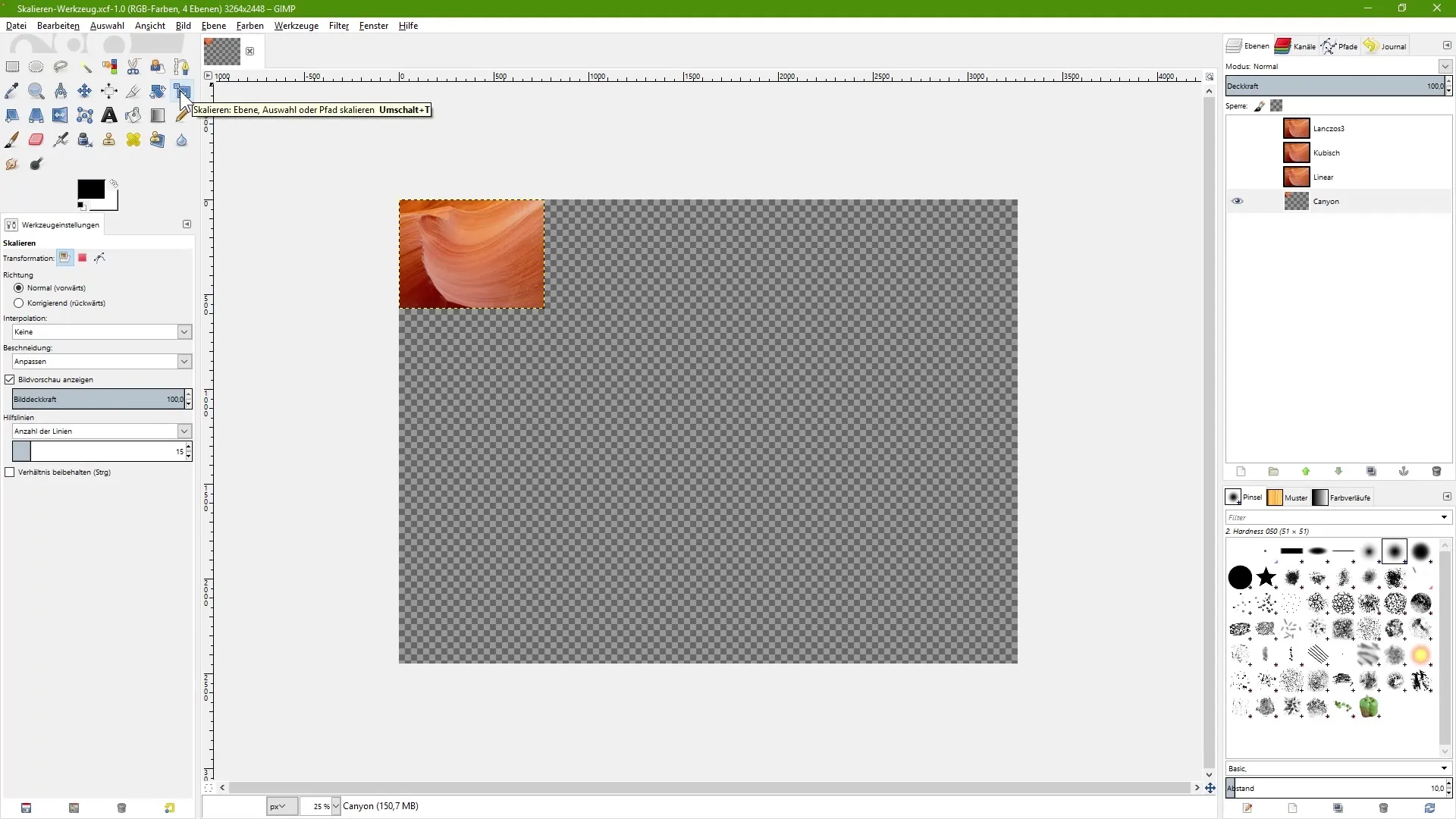
Scaling an Object
Once you have selected the Scale tool, you can click on the image or layer you want to adjust. This activates a grid with horizontal and vertical lines and a dialog where you can specify the desired size.
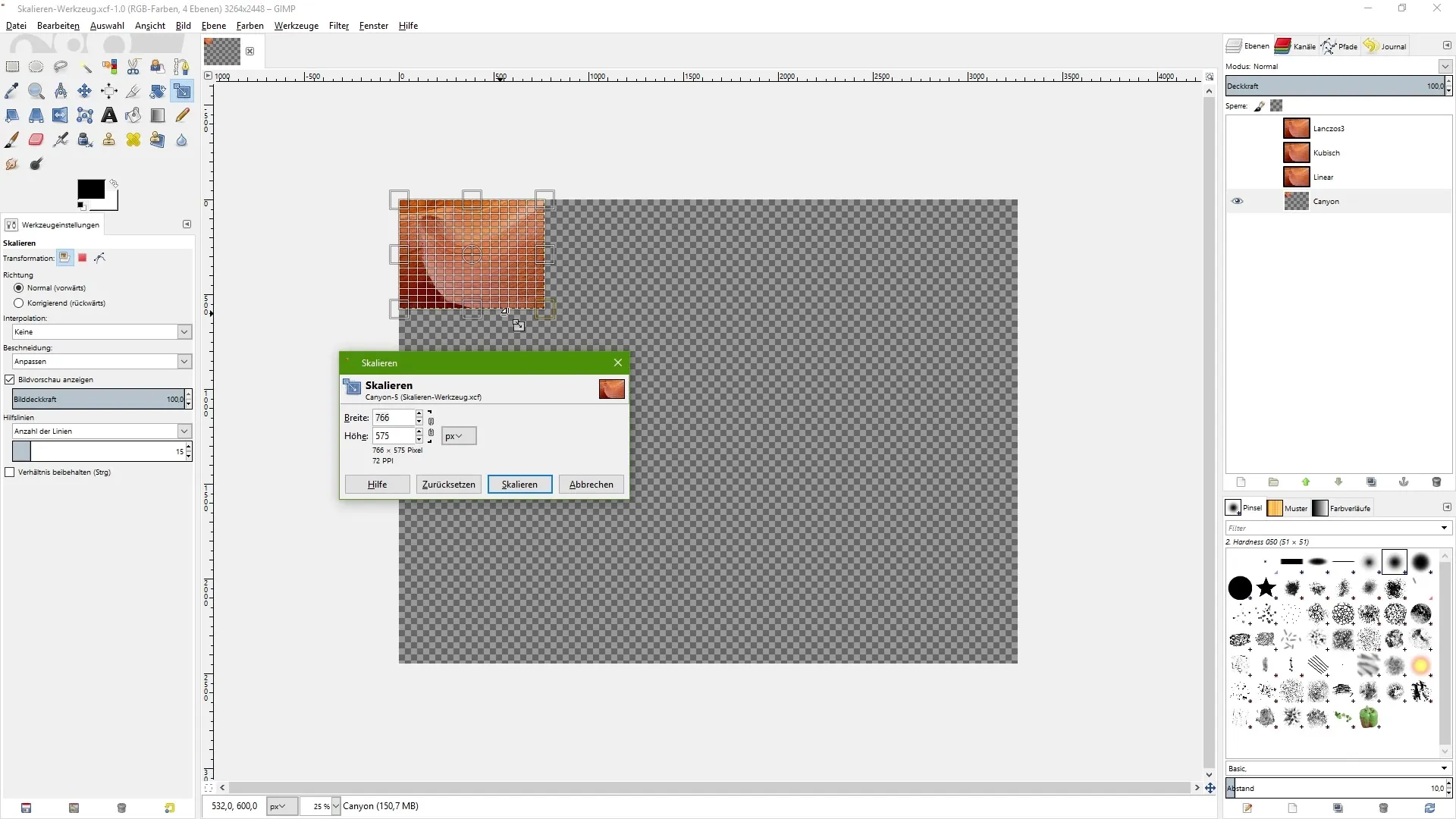
Setting Proportional Scaling
If you want the image to scale proportionally, you have two options. You can hold down the Control key while dragging the handles, or you can enable the "Maintain aspect ratio" option in the tool options. This is especially useful to avoid distorting the image when adjusting it manually.
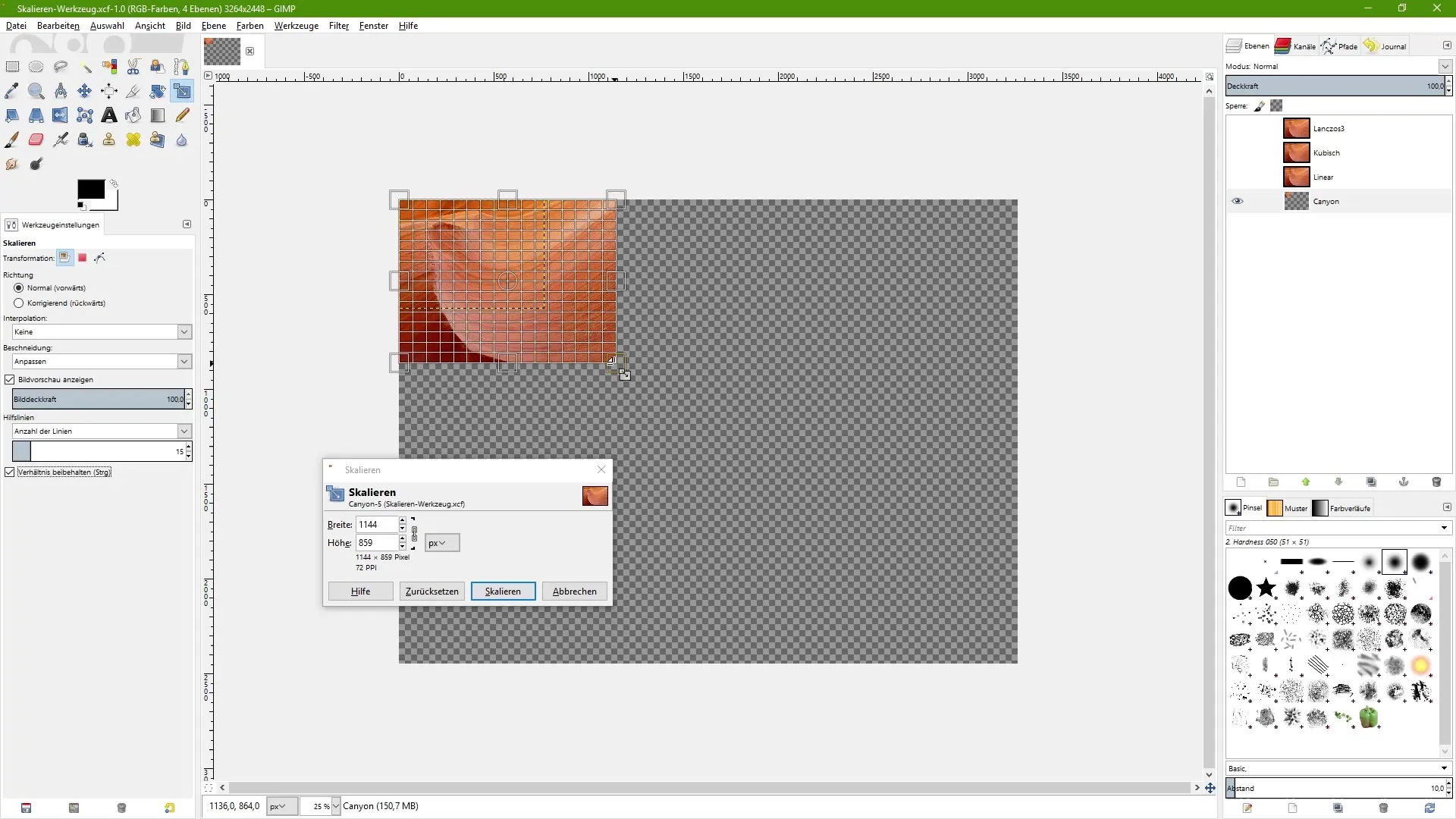
Adjusting Size Numerically
You can also enter the size directly in the dialog. Make sure to click the chain icon to maintain the ratio between width and height. If you deactivate the icon, you can adjust the values independently and thus distort the image.
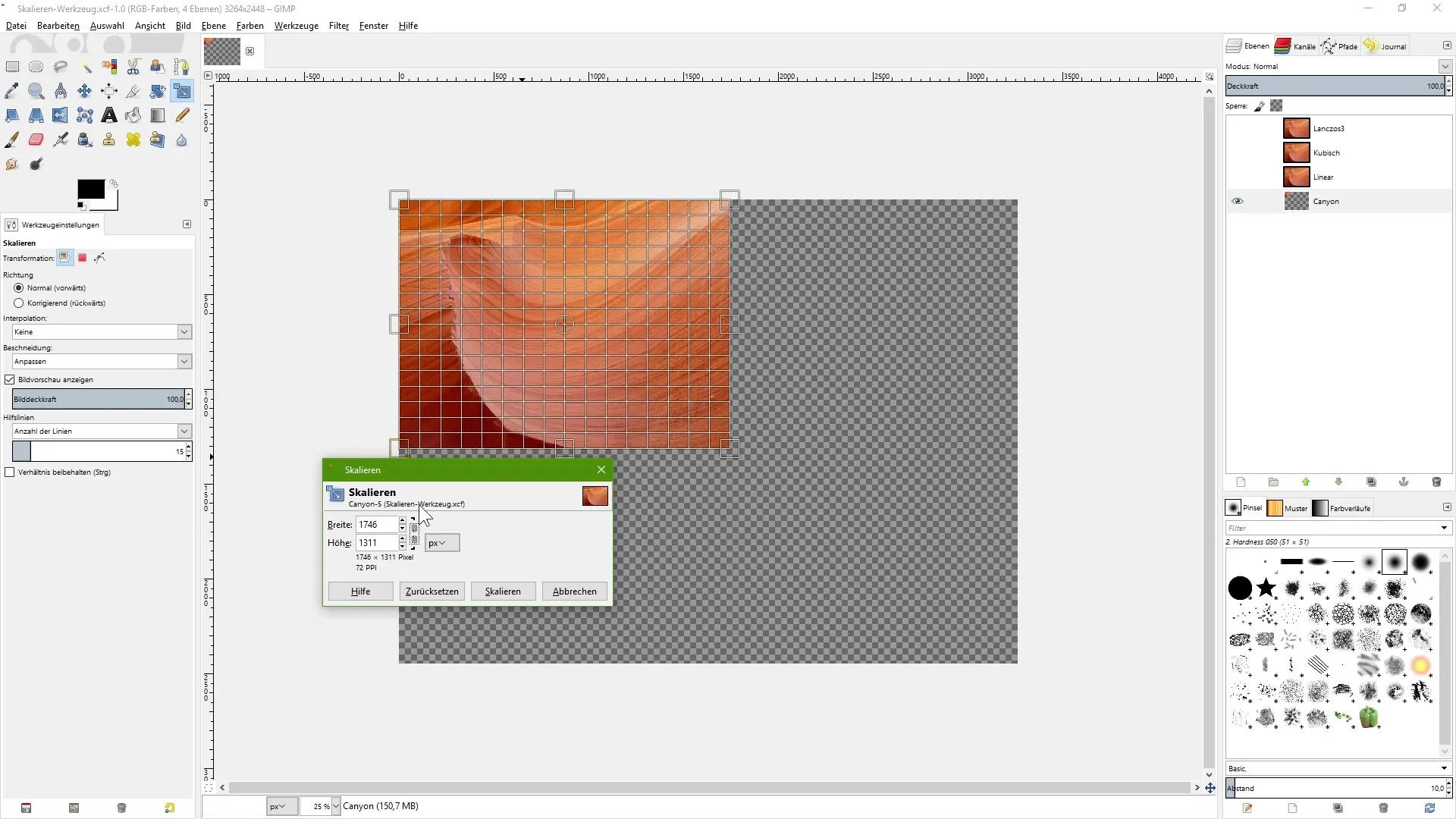
Scaling to Exact Dimensions
If you want to scale your image to specific dimensions, for example 3264 pixels wide, make sure the chain is active and adjust the height value accordingly. You can also use the arrow keys to change the values incrementally without manually toggling the chain.
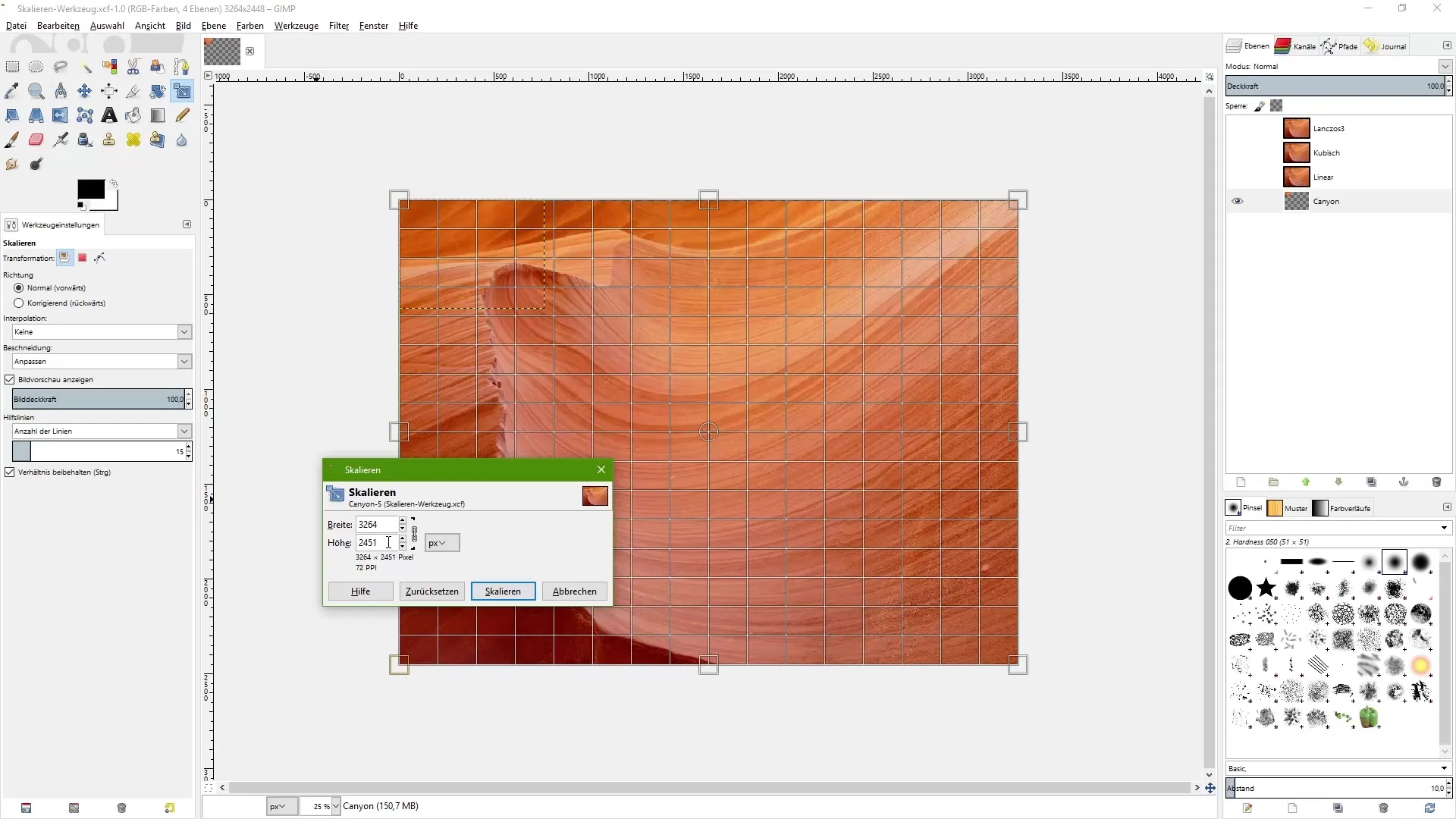
Choosing an Interpolation Method
An important aspect is interpolation. If you have set the interpolation to "None" when scaling, the image will usually appear pixelated. Try interpolation methods such as "Linear", "Cubic", or "Lanczos 3" to see which result best meets your needs.
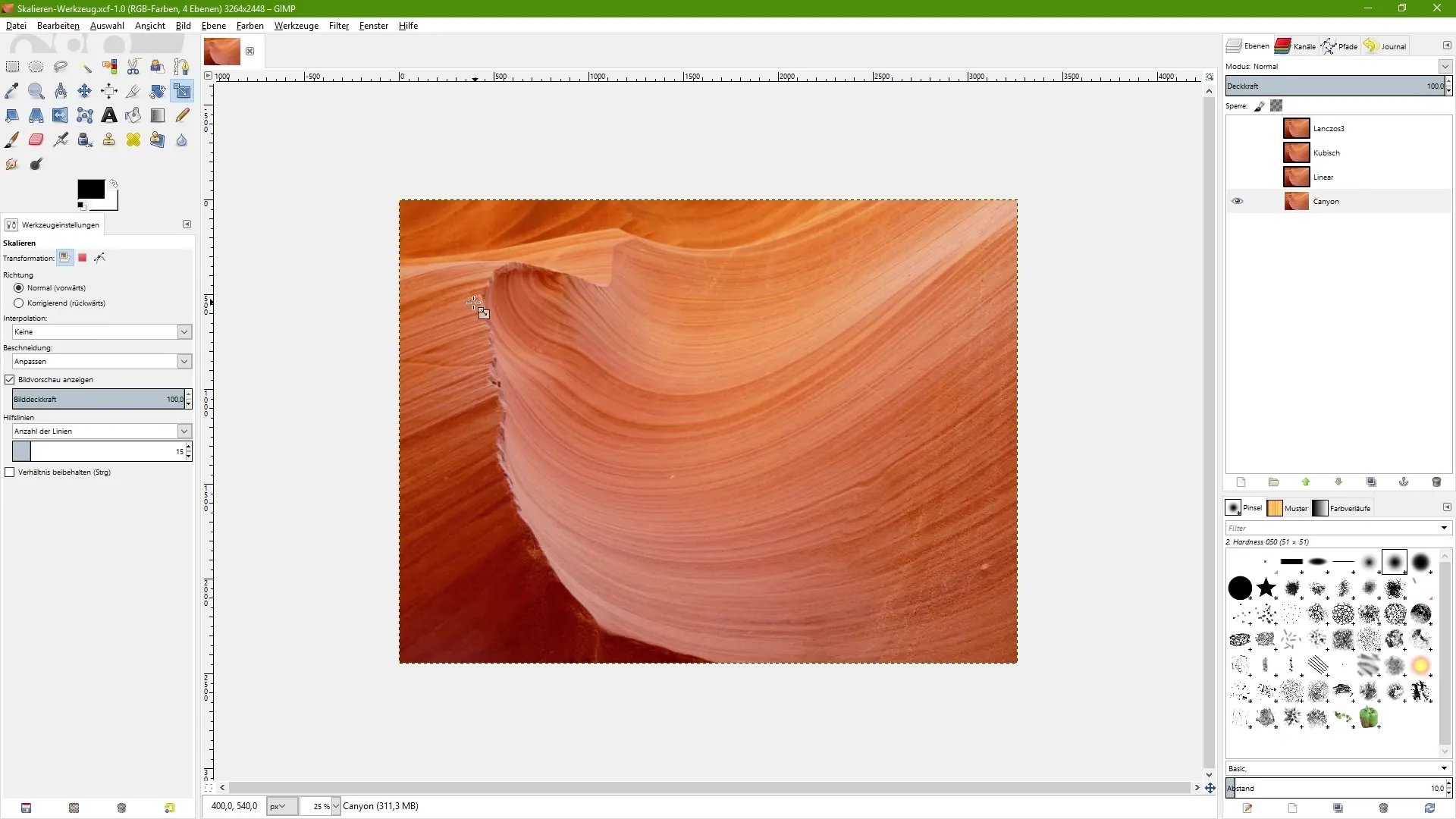
Comparing Results
It makes sense to compare the differences between the various interpolation methods. You can create multiple layers of the same image in different modes and view the results side by side. This helps you make an informed decision.
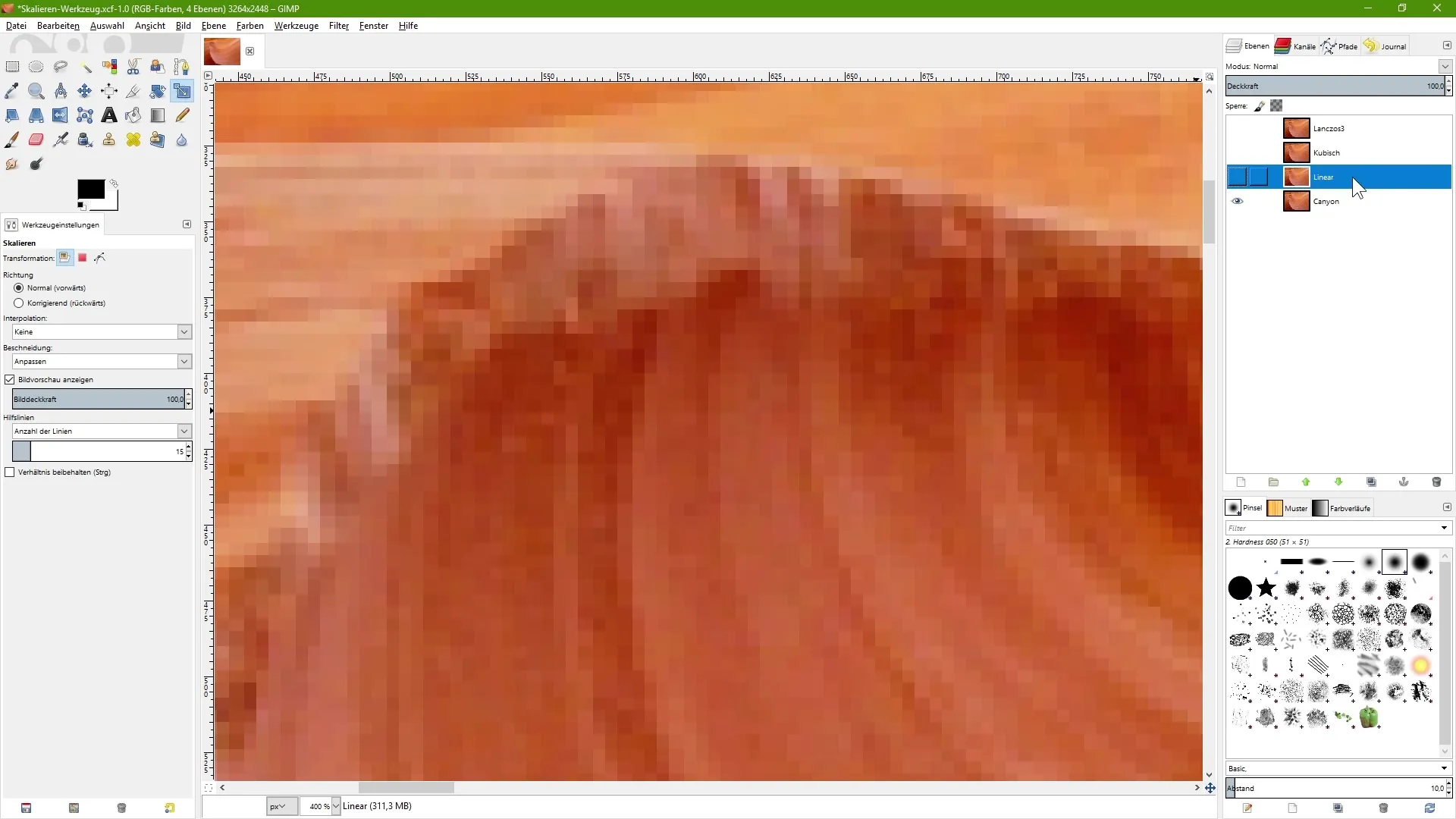
Finding Your Preferences
Ultimately, you should find which interpolation method you prefer. Every user has different requirements and preferences when it comes to scaling images. Experiment with the methods to get a feel for which one works best for your specific projects.
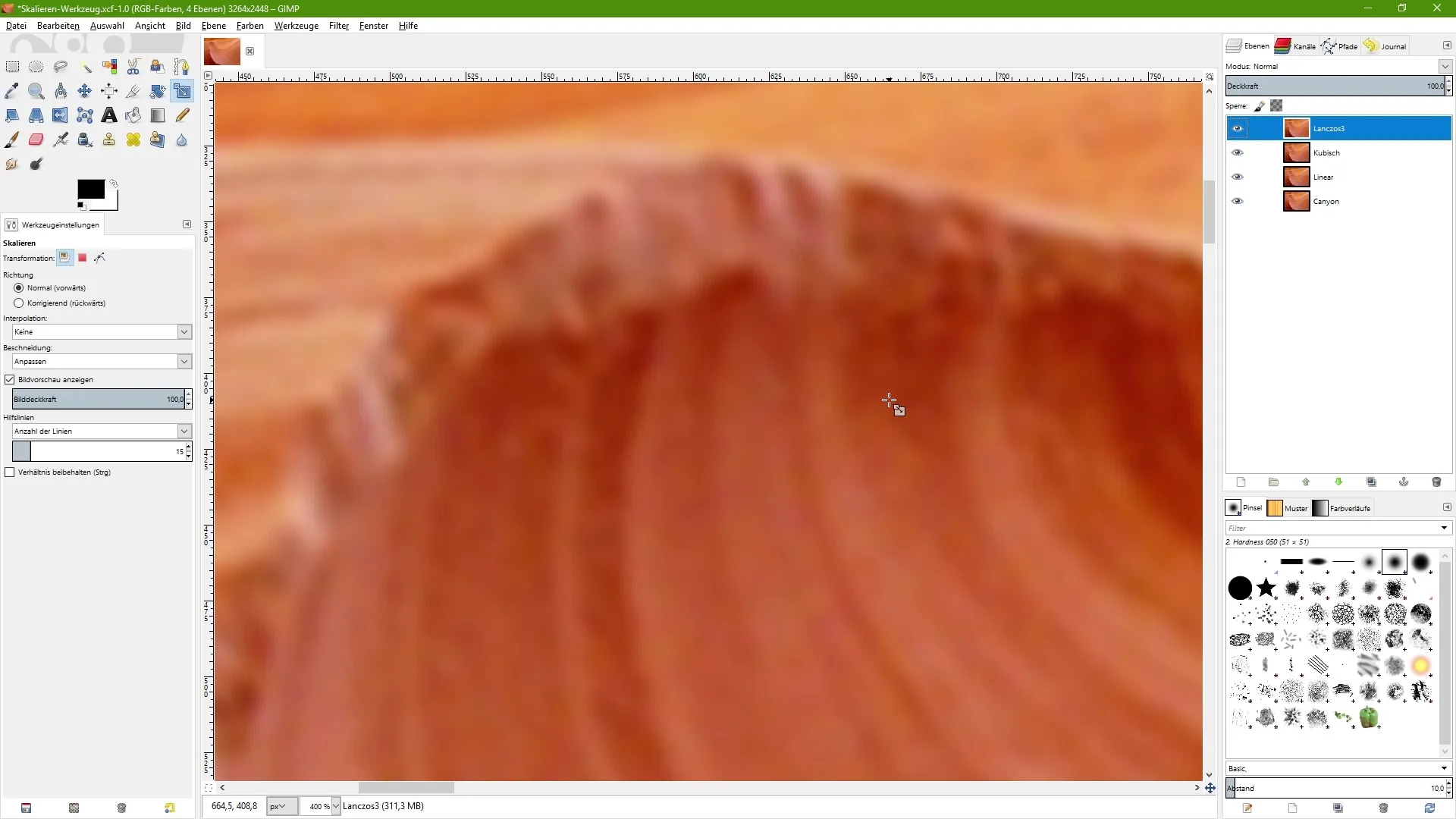
Summary – Image Editing with GIMP: Getting the Most Out of the Scale Tool
The Scale tool in GIMP gives you the ability to precisely transform images and objects. With the right settings, especially for interpolation, you can significantly improve the quality of your scaling. Keep track of the tool options to achieve optimal results.
Frequently Asked Questions
What does the Scale tool do in GIMP?The Scale tool changes the size of objects or layers without changing the dimensions of the entire document.
How can I perform proportional scaling?You can hold down the Control key or enable the "Maintain aspect ratio" option.
What are the key interpolation methods in GIMP?The key methods are "Linear", "Cubic", and "Lanczos 3". Each offers different quality levels when scaling.
Why do I see pixelated images when scaling?This happens when you have set the interpolation to "None". Use a different interpolation method for better results.
How can I enter the size directly?Enter the measurements in the dialog, making sure the chain icon is enabled to keep the proportions.
